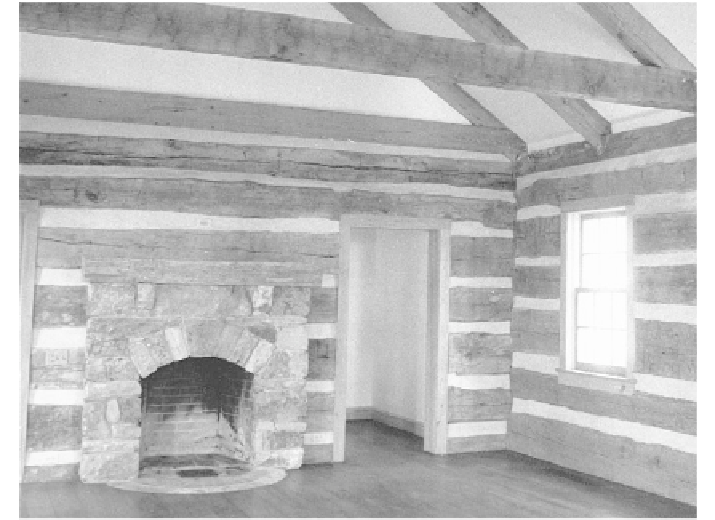Civil Engineering Reference
In-Depth Information
happens, then run a bead of clear caulk into it. Mod-
ern caulks last a long time, and if it can get into the
crack, it'll flex with the wood and stay tight.
There are lots of synthetic chinking compounds on
the market, but none of them has been around long
enough for us to really know about its long-term effec-
tiveness. Most of them are petroleum-based plastic,
which breaks down in ultraviolet sunlight. They are
also all very expensive. We use a high-silicone product
that weathers well.
Scribing logs and shaping them further so as to
allow chinkless fitting in the Scandinavian method
does work. B. Allen Mackie, in British Columbia, is the
acknowledged authority on this method. It's used with
success by some of the current builders, but it requires
more logs in a house. It is also quite time consuming
(and therefore costs more money).
Using a plastic-based product means you'll have to
rechink often. Maintenance is something you gener-
ally want to avoid in a log house, so don't build it in
with the chinking.
Chinking Checklist
Install window and door trim
before chinking, if possible, for
a tighter fit.
Don't chink green logs.
Allow a minimum two-inch chink-
ing space between logs, but four
inches is better. Trim back logs if
necessary.
Install metal lath at an outward-
sloping angle, cutting with tin
snips to fit the irregularities of
the log. If there is a groove in the
upper log, push the lath into it.
If not, nail the lath an inch to
1⁄/™ inches under the upper log
and slope the mesh toward the
outer edge of the lower log,
leaving half an inch for mortar.
Dampen log surface with water.
Lay on chinking mix with trowel
to half an inch thick.
Log house chinking should be a natural com-
plement to the logs and not call too much
attention to itself. We use brick-red sand
to take some of the brightness out of our
chinking. This gives a soft tan — rather than
cement gray — color to the chinking.







